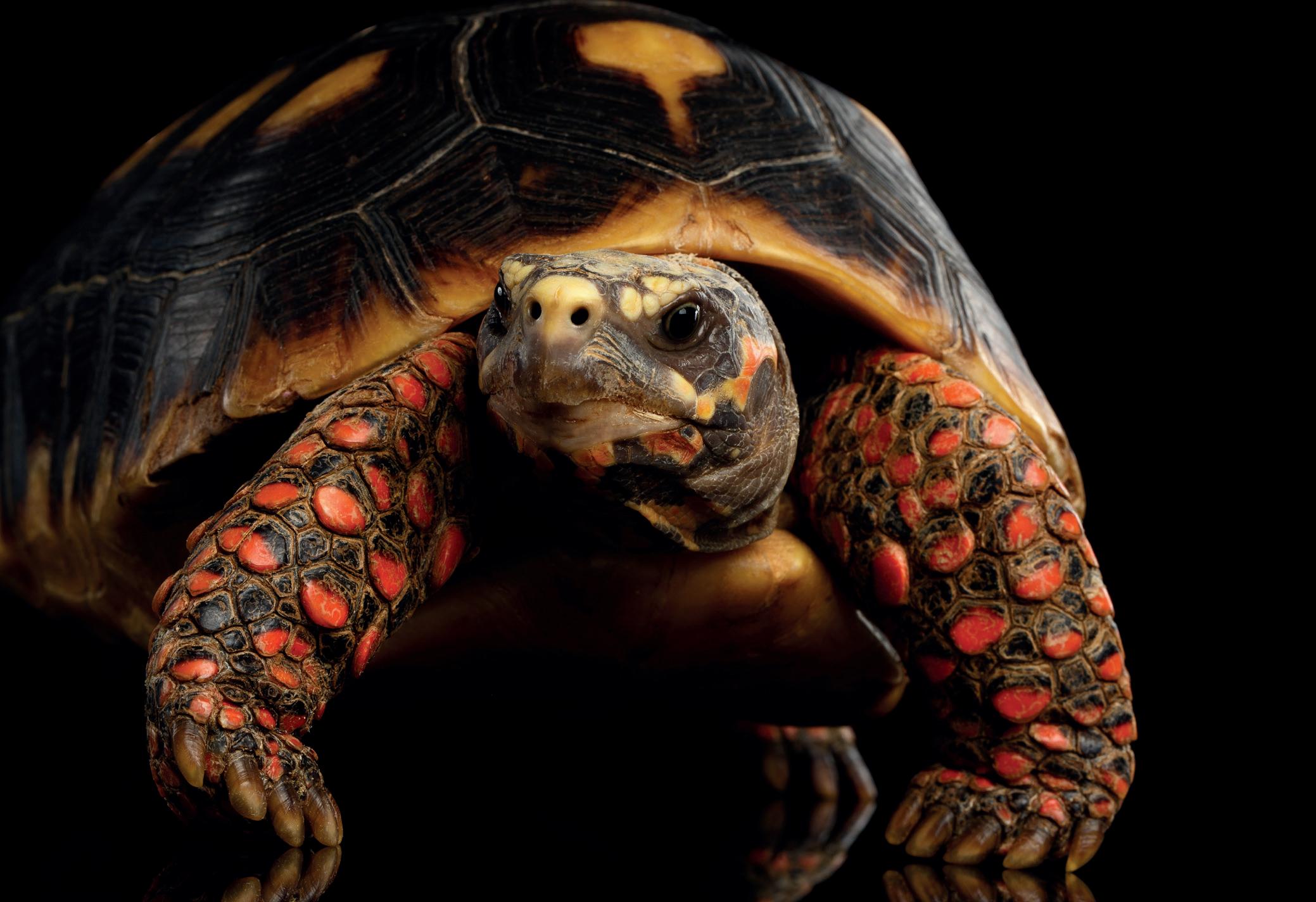
4 minute read
SPECIES SPOTLIGHT
The wonderful world of exotic animals
Red-footed tortoise (Chelonoidis carbonaria)
Advertisement
The red-footed tortoise is a species of tortoise from Northern South America. Their distribution stretches across the majority of Brazil, up to Guyana and as far South as Argentina. As such, they thrive in a variety of habitats from rainforests to savannah grasslands. This species is also thought to be absent from much of the Amazon basin as they actively avoid muddy areas due to their tendency to dig and burrow.
Although this higher humidity environment might be more specialist than some of the Mediterranean tortoises, their foraging habits make them much more forgiving in their dietary requirements. These tortoises will feed on fallen fruits through the wet season, which would usually be considered too rich and fatty for their European counterparts. The geological structure of South America does not provide the limestone base found in arid Europe and thus the shoots are not as rich in calcium.
Therefore, a light dusting of calcium powder on a richer 60% fruit, 40% foliage diet is required to keep red foots healthy. Their frugivorous nature makes them important seed-dispersers across their range. Red-footed tortoises have also been known to eat a good amount of carrion, giving them extra protein and calcium requirements when needed.
In captivity, red footed tortoises should be kept at 60-80% humidity, meaning wooden vivariums are often the optimal choice of enclosure, but tortoise tables with suitable moisture-retaining substrate are also an option. Ensuring that the enclosure replicates the heavily forested areas these tortoises come from is key. Creating a large indoor/outdoor enclosure with high levels of UV and no vegetation or cover is a common mistake as red foots prefer a very different environment to Mediterranean tortoises. Providing zone 2 lighting is most appropriate for red-footed tortoises. During the summer months, an outdoor enclosure with dappled shade is ideal for these tortoises and allows them to receive good levels on enrichment.
Red foots should be fed on a split of fruits and greens. Fresh tropical fruits such as papaya, cantaloups and mangos are great, but they will eat most fruits. Avoid banana or citrus and like other species, always avoid watery greens like iceberg lettuce or cucumber due to its poor nutritional content. Animalbased protein should also be supplied once a week. Different keepers will provide this in different ways, but shrimp, steamed chicken, boiled eggs, waxworms and even dry cat food can be used.

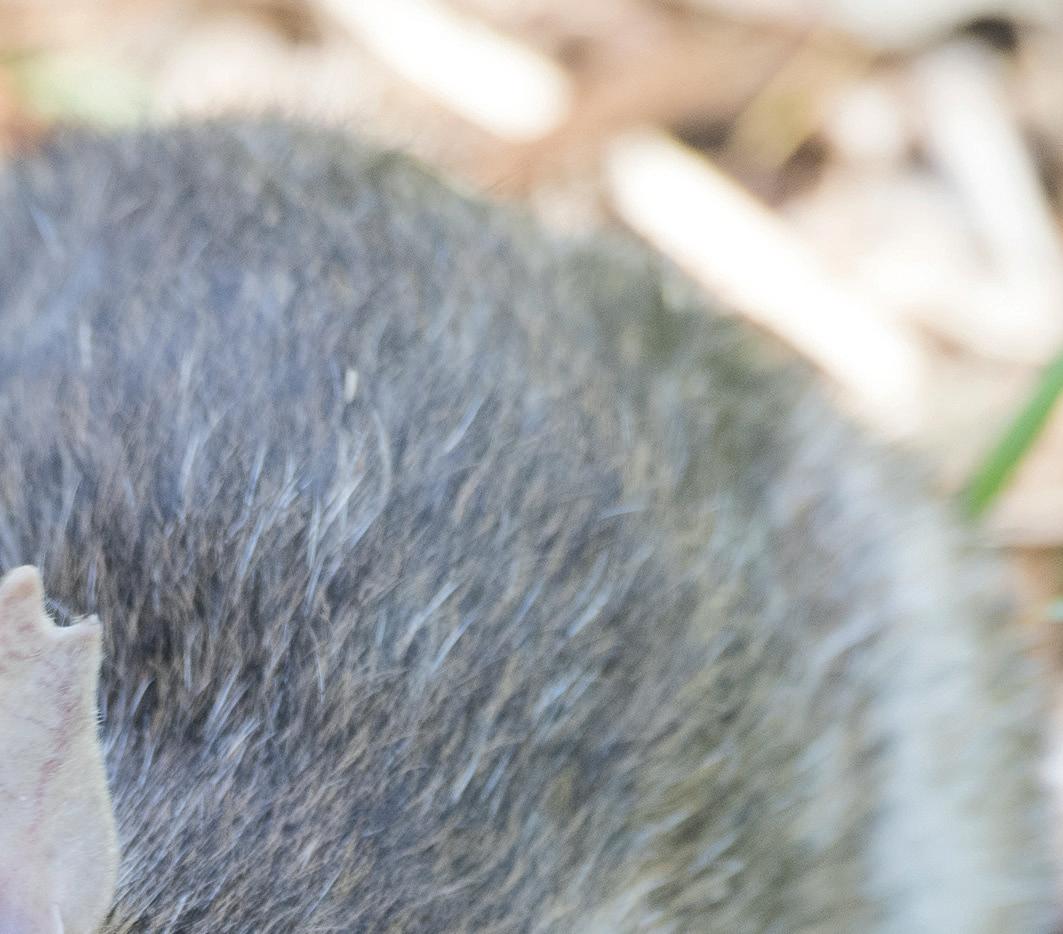
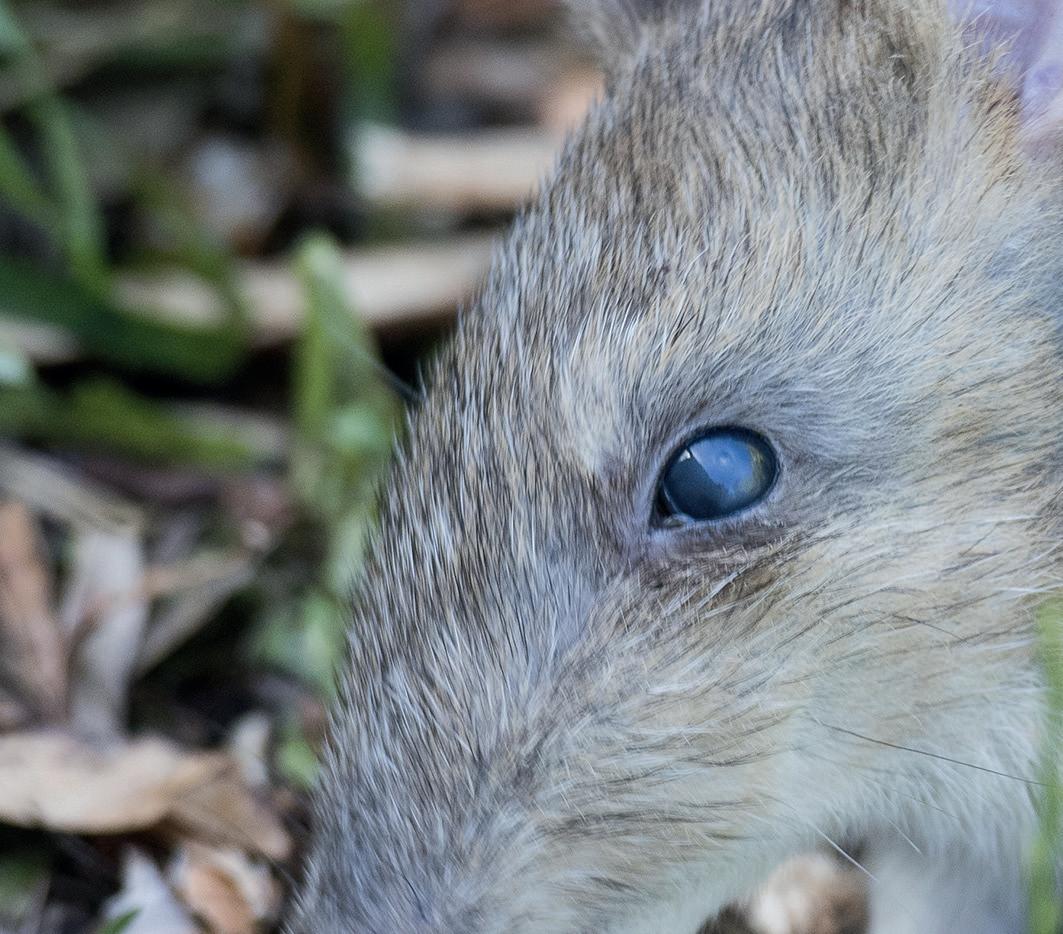
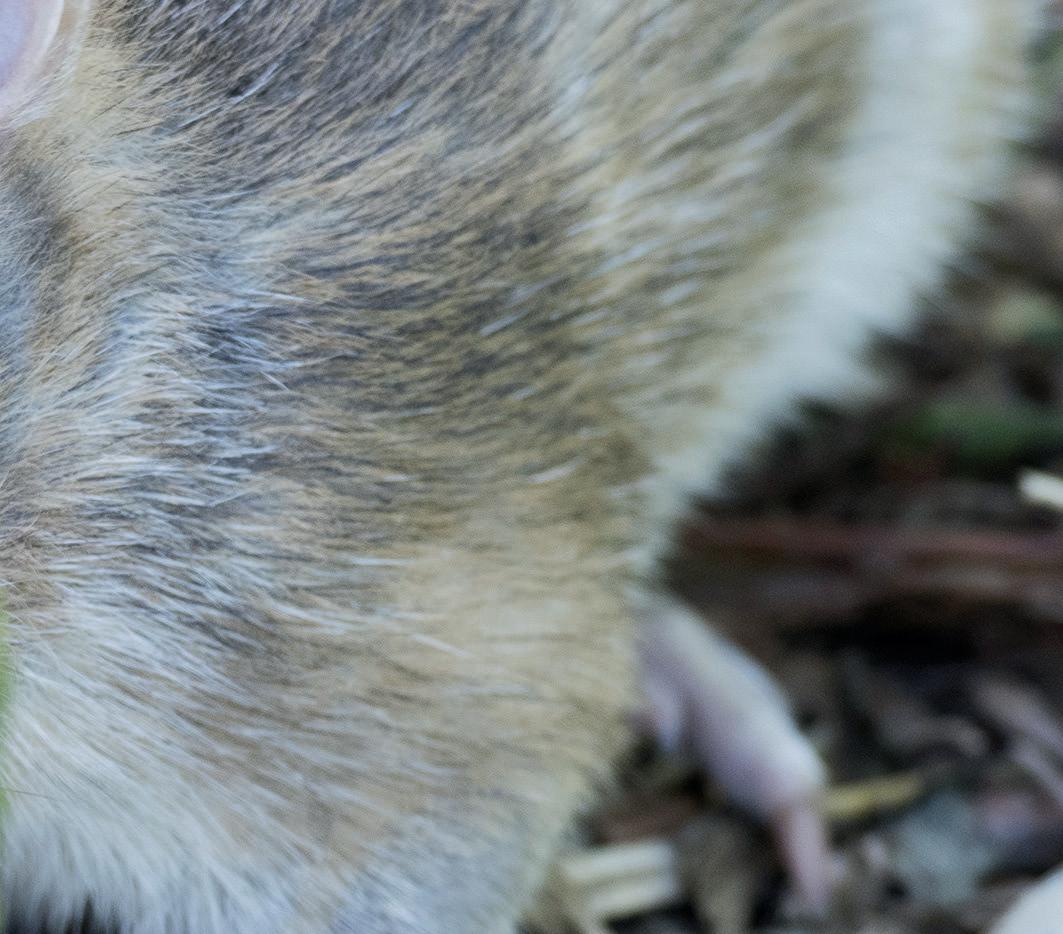
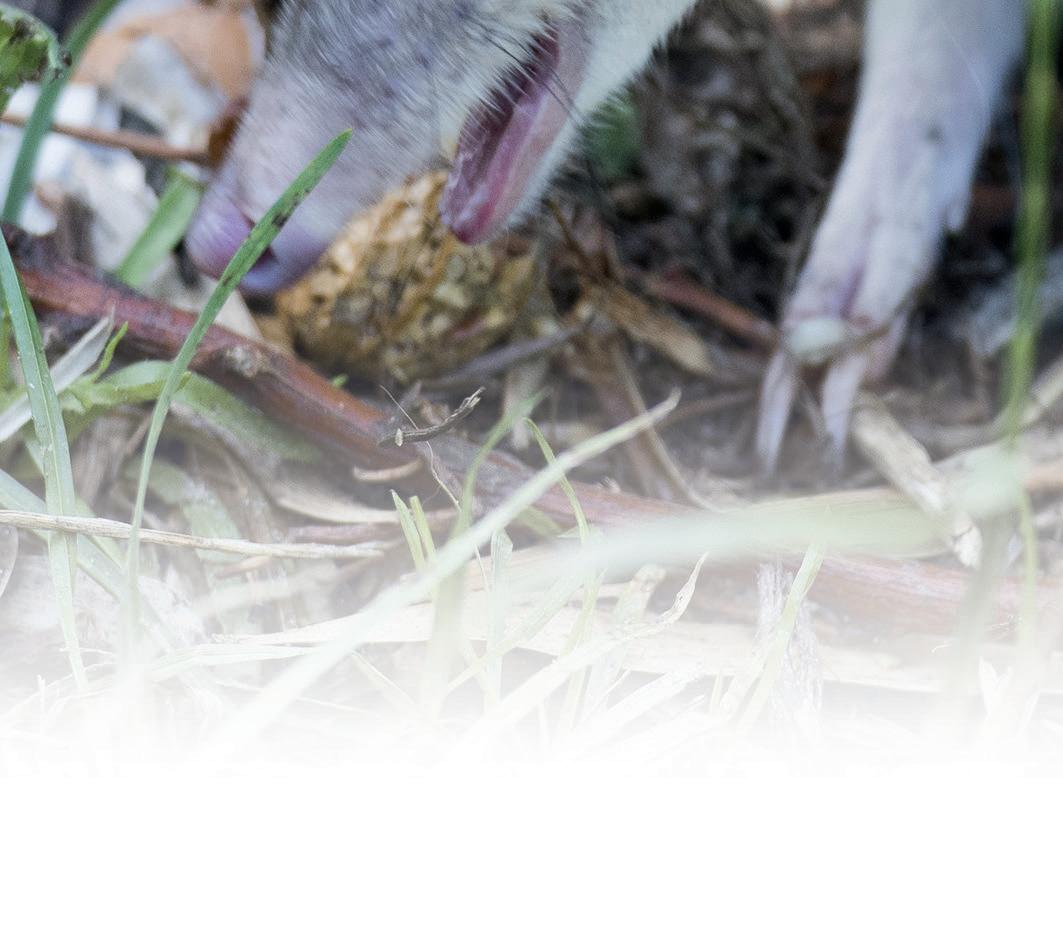
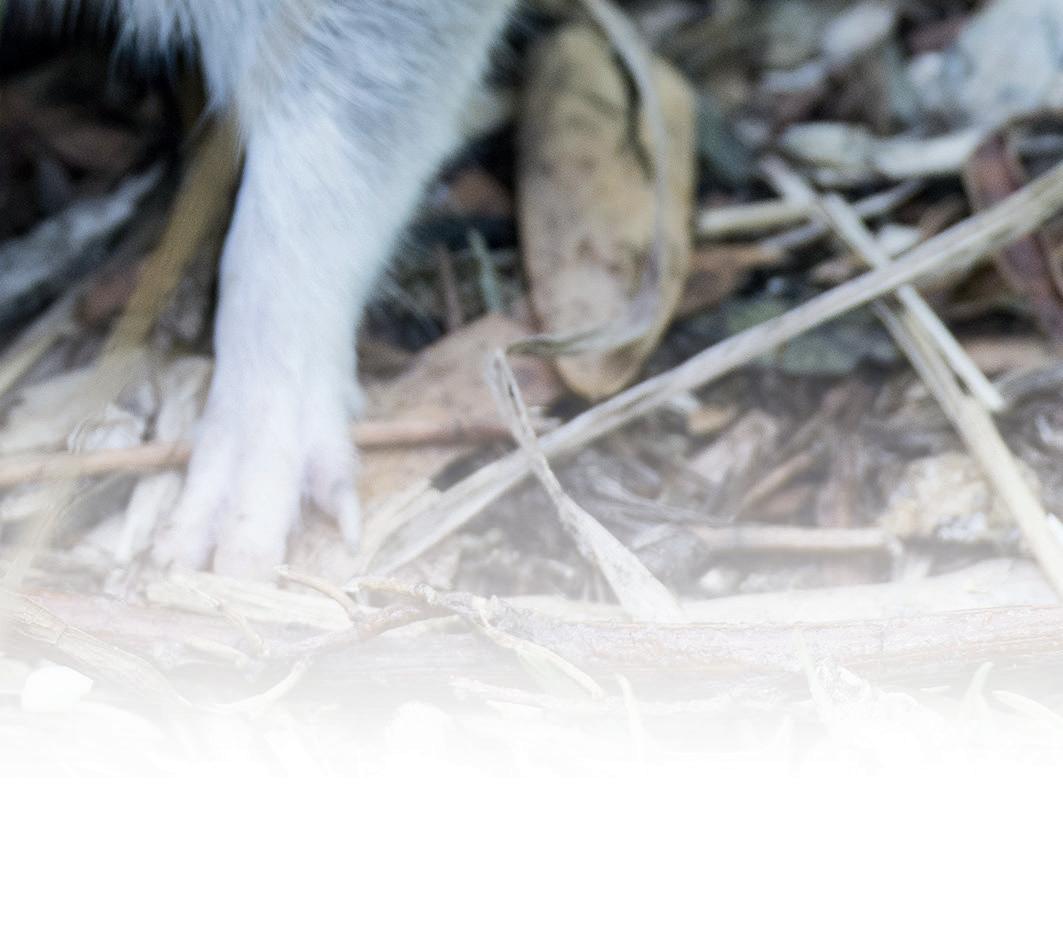
Australia’s flora and fauna is fragile, with over 80% of its animals being endemic to the nation. As infrastructure continues to develop, many species are under threat and with such a large percentage of species found nowhere else on the planet, conservationists rarely have a second chance to save a species once their population plummets. However, one species has gone against the grain. In a country first, the previously-declared-extinct Eastern barred bandicoot (Perameles gunnii) has been reclassified as an extant species.
The Eastern barred bandicoot is a tiny marsupial, previously common in grasslands and plains in South-East Australia. As infrastructure developed across Victoria and feral cats and foxes became more abundant, the bandicoots range diminished. Eventually, in 1989, the last remaining population of around 150 animals were identified just outside the town of Hamilton, South of the Grampians National Park.
Conservationists knew they needed to act fast to save the species and the ‘Eastern Barred Bandicoot Recovery Team’ was formed. They established various breeding projects, protected by fences from feral predators, in suitable areas across their natural range. However, the move into captivity prompted the reclassification of the species to ‘Extinct in the Wild’. In a bid to breed more bandicoots, with stronger genetic fitness and a greater resilience to the impact of climate change, conservationists bred some of the population with the species nearest relative, the Tasmanian Eastern barred bandicoot (P. gunnii gunnii).
Since captive breeding efforts worked so well, new locations have been identified for release, as well as three islands, safe from predators, that the bandicoots can now call home. Community initiatives and awareness campaigns have helped restore wild areas and bring attention to the terrible ecological impact of feral and domestic cats.
In an ingenious conservation move, Maremma dogs are being used to protect the bandicoots. A nature reserve in Western Victoria, deemed suitable for release of the bandicoots has also had 146 sheep and two sheep dogs released. The dogs, McKinna and Quinton would watch the flock of sheep across the 50-hectare reserve. Already trained to avoid the bandicoots, the atmosphere created by the dogs prevented feral predators from accessing the land and predating on the bandicoots.
Dr Amy Coatsee of Zoos Victoria told the Guardian: “These dogs aren’t great pets – they like to have a job. They’re big, shaggy, beautiful animals, but they will create what we call, a landscape of fear… The dog is a bigger predator than the fox. It doesn’t necessarily stop the foxes passing through, but it makes them more cautious, and they won’t stop to look for prey.”
Now, over 30 years on from the inception of the Eastern Barred Bandicoot Recovery Team, 1,200 animals have been released back into the wild. In September 2021, the Eastern barred bandicoot was changed from ‘Extinct in the Wild’ to ‘Endangered’. These conservation milestones are rare. Victoria Government donated $5.5 million to the cause, with funding also coming from the Commonwealth Government, Conservation Volunteers Australia and Tiverton Property Partnering.
Minister for Energy, Environment and Climate Change, Lily D’Ambrosio said: “This success is due to the efforts of every member of the recovery team. Community volunteers have played a big role at many of the reintroduction sites, helping check fences, count bandicoots and remove weeds and pests.”
“It is wonderful to see so many agencies and organisations working together to achieve this fantastic outcome for the Eastern Barred Bandicoot.”
“We are excited to announce the change in conservation status for the Eastern Barred Bandicoot from extinct in the wild to endangered – it is an incredible first for Australia,”









